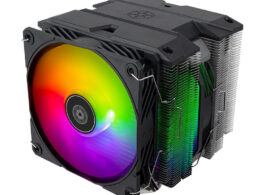AMD’s annual report for 2023, released yesterday, presented a positive picture overall, with a newsworthy surge in sales of Radeon gaming graphics accelerators. However, the company has not disclosed the exact magnitude of this sales increase.
The AMD report highlights a 17% revenue decrease from gaming in 2023 compared to 2022. This decrease is primarily attributed to a slowdown in sales of gaming consoles – notably the Sony PS5 and Xbox Series X and S – all of which operate on AMD chips and are nearing the midpoint of their lifecycle.
AMD CEO, Lisa Su, stated that the decline in console chip sales was “partially offset by increased sales of Radeon graphics processors”. She pointed out that AMD’s gaming graphics segment revenue grew in the last quarter in both year-over-year and sequential terms, driven by strong demand for Radeon RX 6000 and Radeon RX 7000 series graphics cards.

However, Su did not specify the extent to which graphics card sales increased. It is likely because the growth was modest, for AMD would have definitely bragged about a substantial surge. More so, if Radeon sales had experienced a remarkable increase, it would have entirely compensated for the sales dip in console chips, which has not occurred.
In total, combined revenue of AMD from console chips and Radeon graphics cards sales in 2023 amounted to $6.2 billion. This is slightly less than the $6.5 billion revenue derived from the sales of CPUs and GPUs for data centers.
NVIDIA’s gaming graphics cards revenue for 2023, though not published yet, was projected to be almost $10 billion, following existing trends. Surprisingly, this is significantly higher than AMD’s, given NVIDIA’s considerably larger market share in graphics cards. Nevertheless, NVIDIA’s overall financial results will be impressive due to the AI boom. A year and a half ago, NVIDIA’s quarterly revenue was $6 billion; meanwhile, it reached $18 billion in the third quarter of 2023. AMD’s revenue, on the other hand, was nearly $23 billion for the entire year of 2023.

Despite AMD and NVIDIA operating on a comparatively similar scale, AMD’s graphics division appears to still bear a ‘small company’ mentality: perpetually playing catch-up with NVIDIA as opposed to pouring significant resources to strive for the top spot. Perhaps AMD is not yet ready to take on such risk, remembering its near-bankruptcy not too long ago. Regardless, it is hoped that AMD will push Radeon graphics cards further forward. Unfortunately, current rumors suggest that its next-generation graphics processors, RDNA 4 – likely to be used in Radeon RX 8000 graphics cards – will not even attempt to challenge NVIDIA in the high-end segment. Hence, AMD’s approach is unlikely to change in the foreseeable future.




